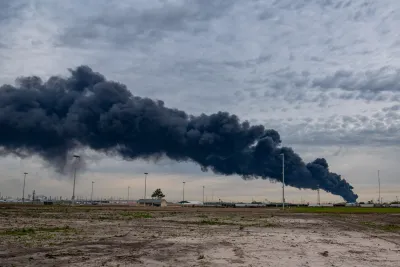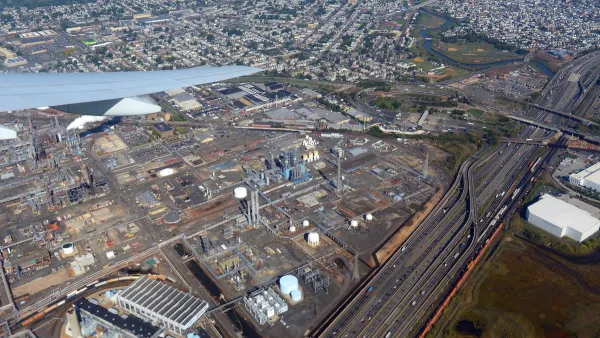The city wants to monitor air quality and measure cancer-causing emissions near two petrochemical plants, one of which announced plans for expansion last year.

A grant totaling close to half a million dollars from the U.S. Environmental Protection Agency (EPA) will help the city of Houston monitor air pollutants including 1,3-butadiene in neighborhoods at high risk for poor air quality.
As Ysabella Kempe explains in Smart Cities Dive, “Exposure to this air pollutant, which smells like gasoline, can cause cancer and trigger short-term health impacts including eye and throat irritation, headaches and nausea.”
According to Loren Hopkins, the Houston Health Department’s chief environmental science officer, “This air monitoring effort was born out of concerns about ‘amazingly high concentrations’ of 1,3-butadiene the city detected near two adjacent chemical plants.” One of the plants, Texas Petrochemical, announced expansion plans in 2022 in spite of community concerns.
“Much of the grant funding will go toward the ‘very expensive’ equipment and sampling needed to monitor air quality, but the city also will use it to pay community partners helping with the project, Hopkins said.” The city also plans to monitor benzene, formaldehyde, and ethylene oxide.
FULL STORY: ‘Amazingly high’ air pollution near Houston chemical plants gets EPA monitoring support

National Parks Layoffs Will Cause Communities to Lose Billions
Thousands of essential park workers were laid off this week, just before the busy spring break season.

Retro-silient?: America’s First “Eco-burb,” The Woodlands Turns 50
A master-planned community north of Houston offers lessons on green infrastructure and resilient design, but falls short of its founder’s lofty affordability and walkability goals.

Delivering for America Plan Will Downgrade Mail Service in at Least 49.5 Percent of Zip Codes
Republican and Democrat lawmakers criticize the plan for its disproportionate negative impact on rural communities.

Test News Post 1
This is a summary

Test News Headline 46
Test for the image on the front page.

Balancing Bombs and Butterflies: How the National Guard Protects a Rare Species
The National Guard at Fort Indiantown Gap uses GIS technology and land management strategies to balance military training with conservation efforts, ensuring the survival of the rare eastern regal fritillary butterfly.
Urban Design for Planners 1: Software Tools
This six-course series explores essential urban design concepts using open source software and equips planners with the tools they need to participate fully in the urban design process.
Planning for Universal Design
Learn the tools for implementing Universal Design in planning regulations.
EMC Planning Group, Inc.
Planetizen
Planetizen
Mpact (formerly Rail~Volution)
Great Falls Development Authority, Inc.
HUDs Office of Policy Development and Research
NYU Wagner Graduate School of Public Service




























